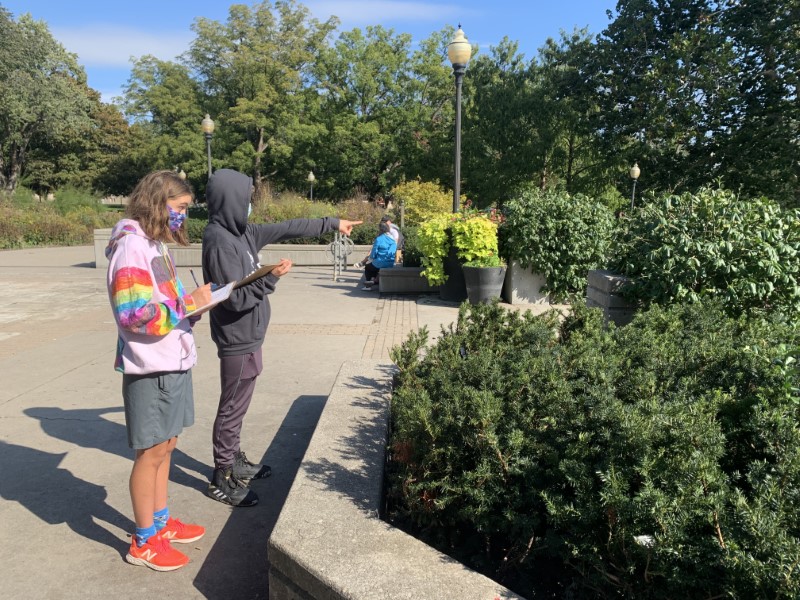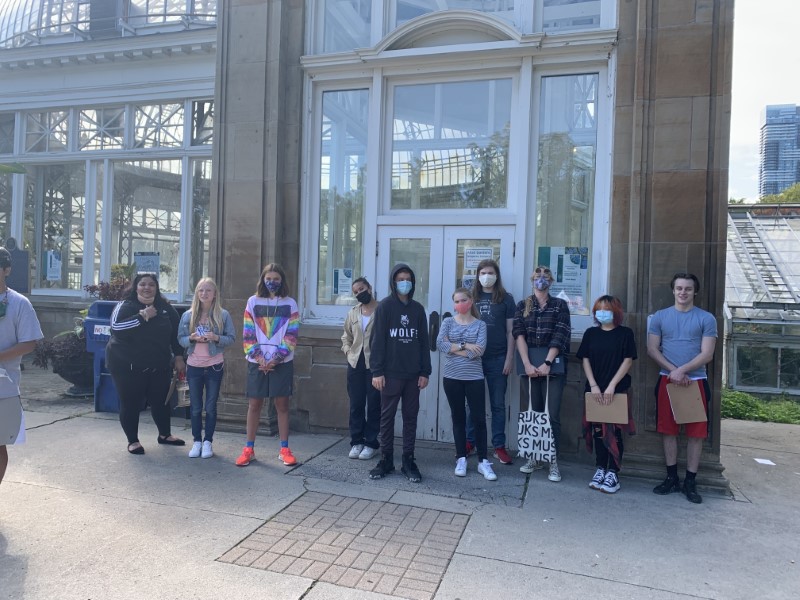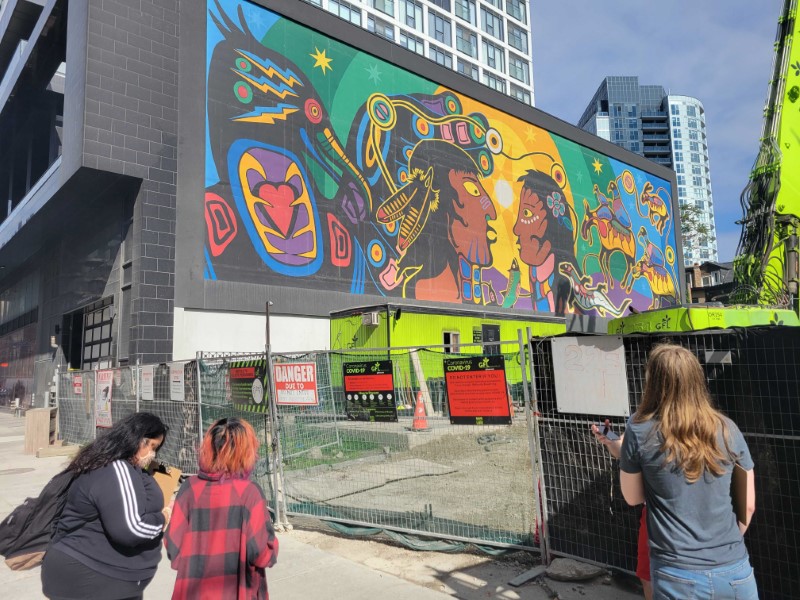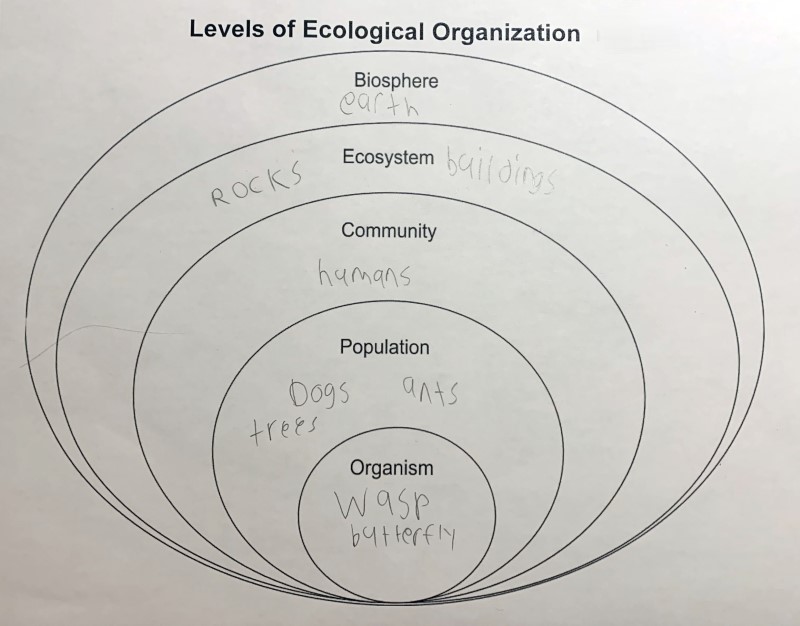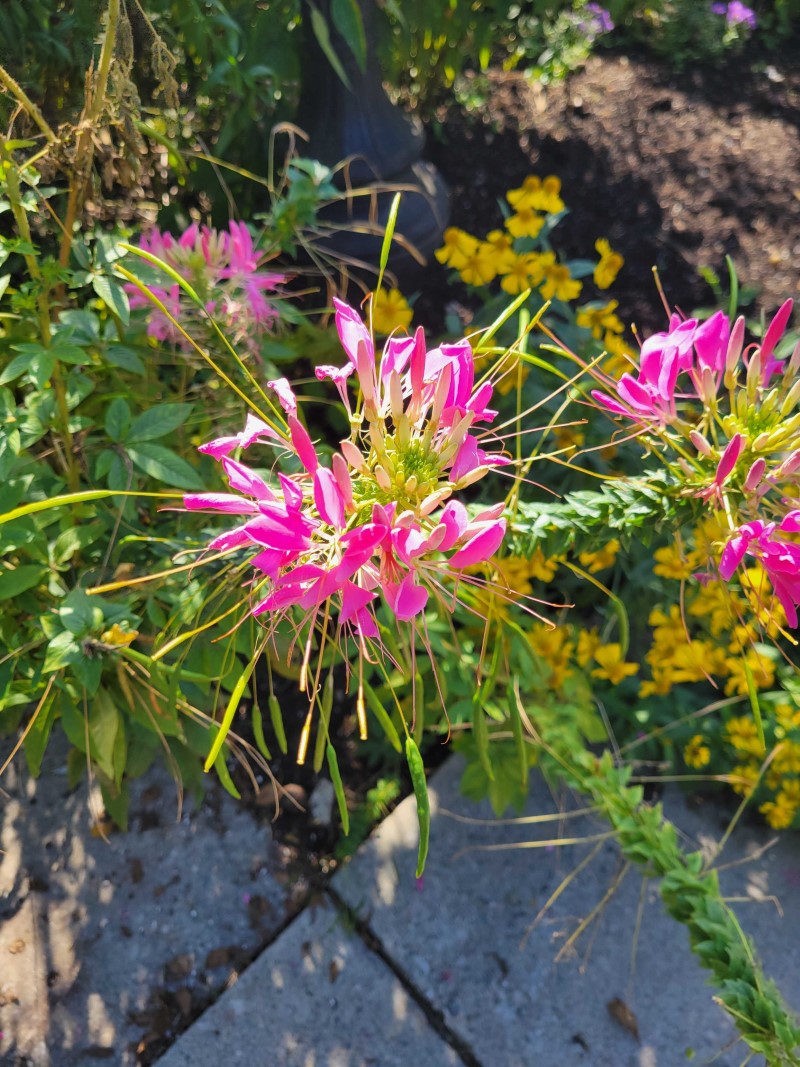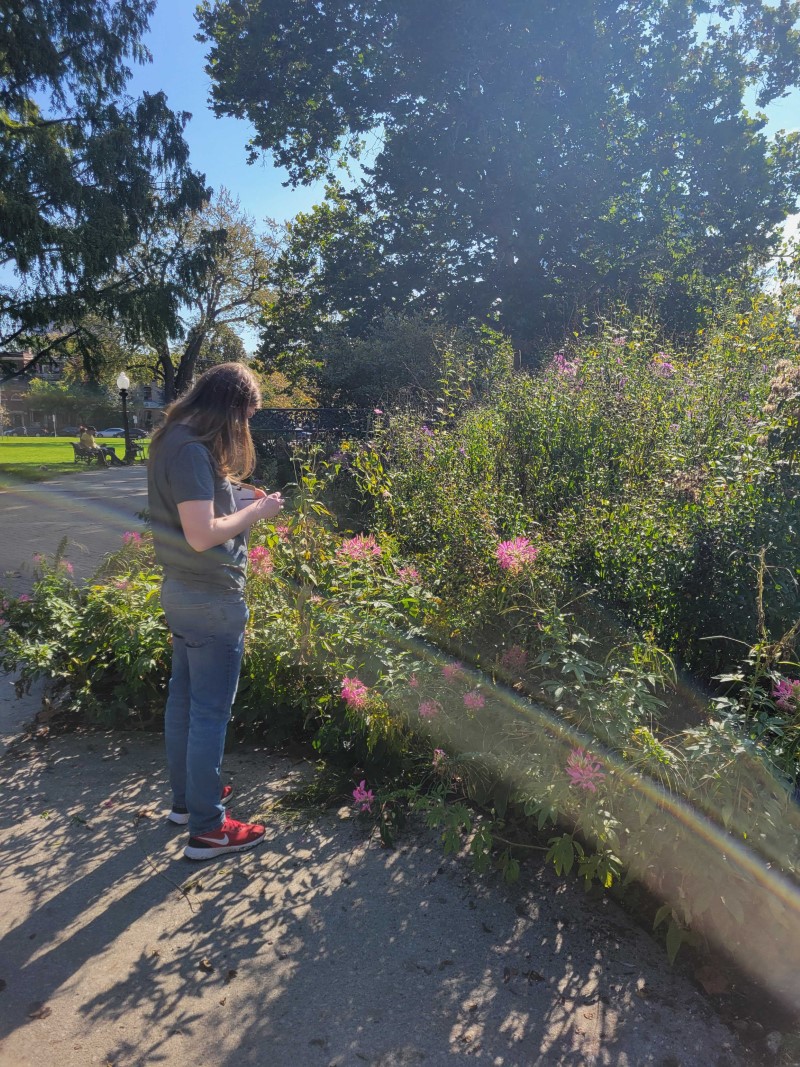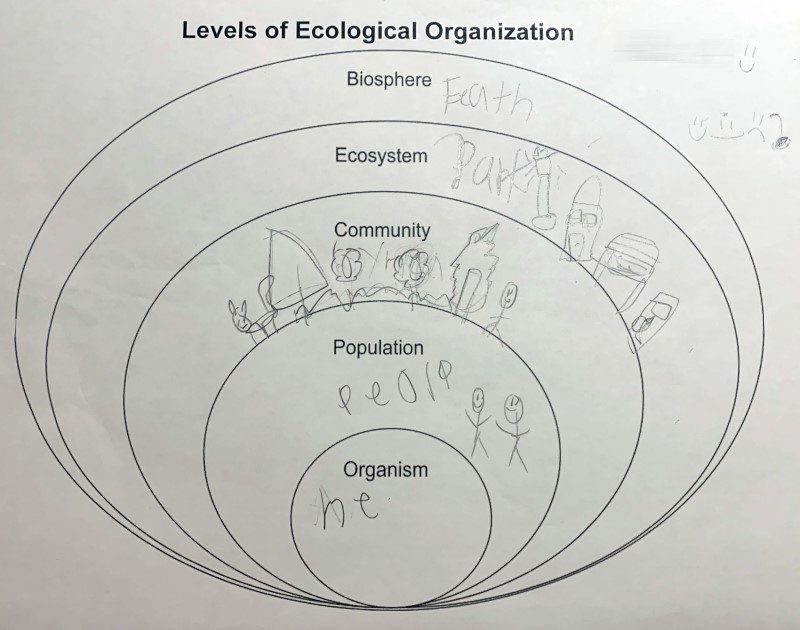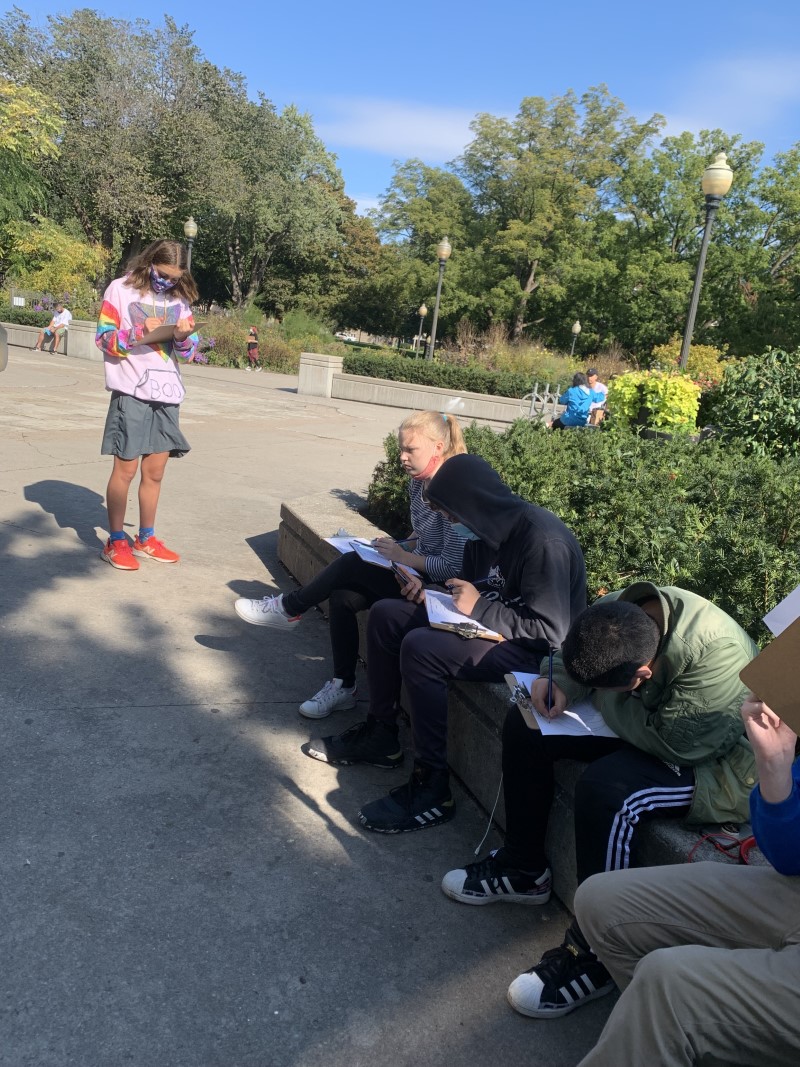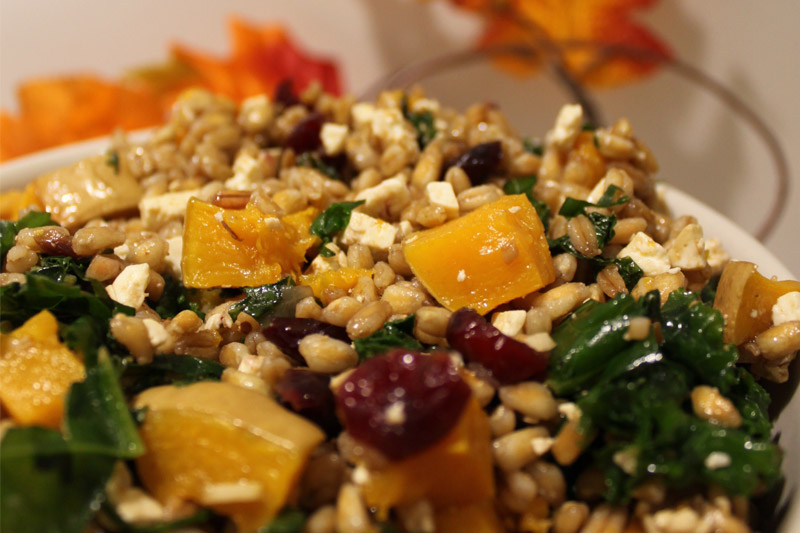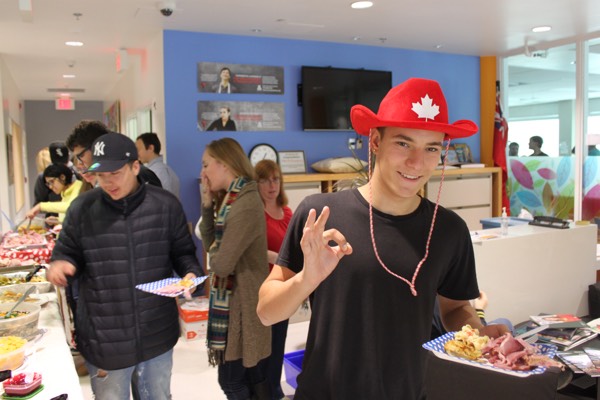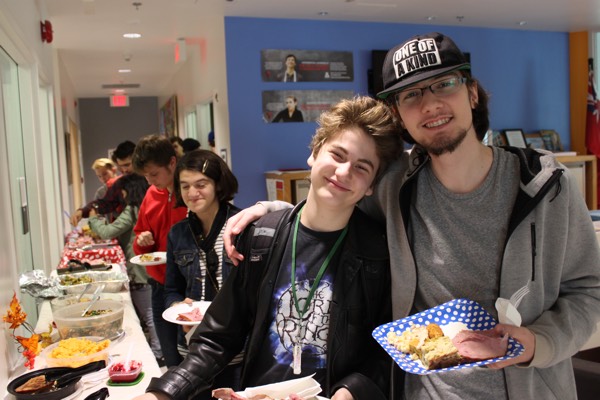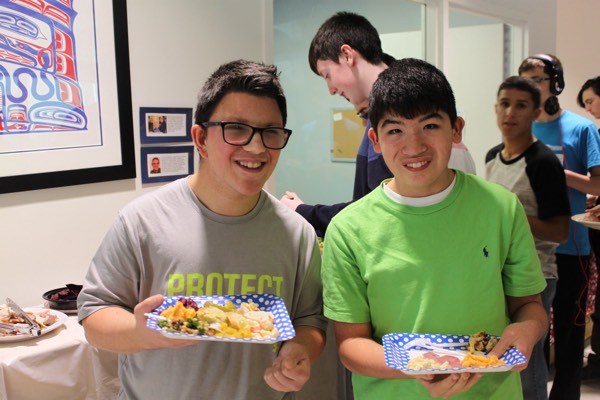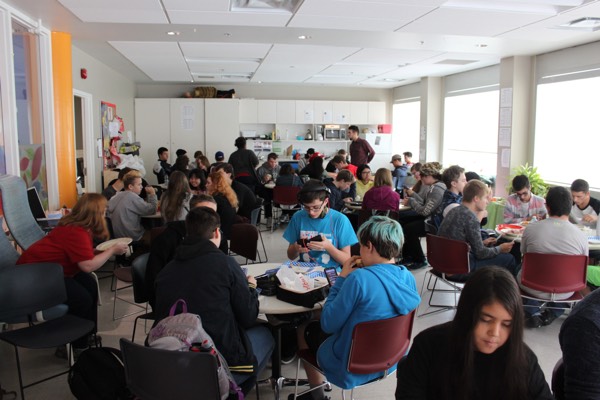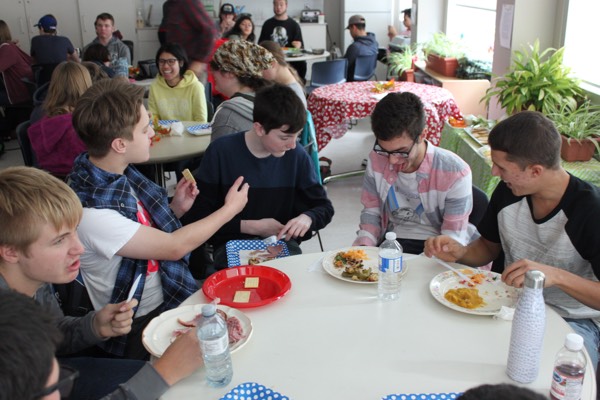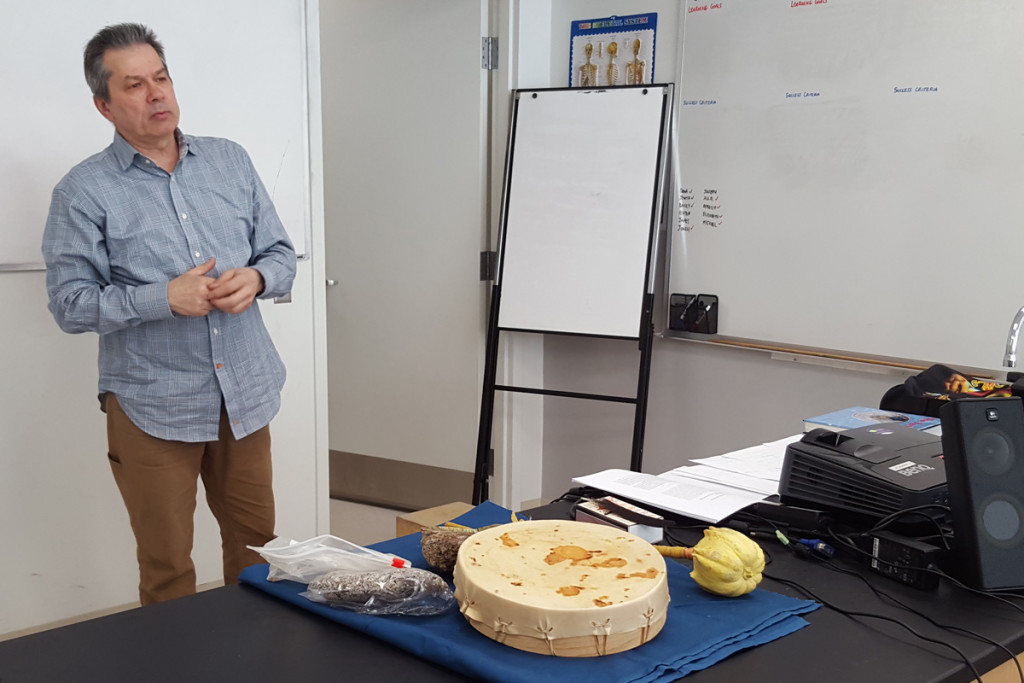September 30, as we know, is an important new federal holiday, now known as the National Day for Truth and Reconciliation. But even before the establishment of the holiday, schools like ours were recognizing Orange Shirt Day. This year was no different in that respect, with numerous activities, both in classes and as a larger group, taking place that week in recognition of the painful legacy residential schools in Canada, in honour of the stories and voice of those impacted, and in hope for a better future born of “truth and reconciliation and justice.”
With our cross-curricular assemblies happening on Wednesdays this year, it was on the morning of September 28 that all high school students gathered together. Leading up to this, students from the Grade 9 Information and Communication Technology in Business class had made posters to advertise assembly and remind students to wear their orange shirts on Friday. On the Wednesday morning, students from three different classes — two Grade 11 First Nations, Métis, and Inuit Voices English classes plus the Grade 10 FNMI history class —- contributed presentations.
The history students presented individual, thoughtful land acknowledgements that showcased their learning about the history of Toronto and the surrounding region, reflecting on their relationship to this land and drawing attention to the past, present, and future Indigenous presence where we live. The English students then presented on poems by Indigenous writers, or read their own poetic creations on the theme of truth and reconciliation, drawing lines and inspiration from what they have been reading. Following the student presentations, most students headed to their choice of rooms to learn more about one of several topics: language, expression, and identity; unequal access to basic services, including health and education, in First Nations communities; or Missing and Murdered Indigneous Women and Girls. After watching a short film highlighting the issue, students discussed and worked on posters that drew attention to several relevant Calls to Action from the Truth and Reconciliation Commission. A smaller group spent their time making art for display or decorating t-shirts while listening to music from contemporary Indigenous artists.
But Wednesday’s assembly was not our only special event that week, as several classes headed down to the Indigenous Legacy Gathering at Nathan Phillips Square the next day. By the time students donned orange shirts on Friday, we trust that they did not feel it to be an empty or isolated gesture.
Of course, truth and reconciliation doesn’t end with September. As teachers and staff of non-Indigenous backgrounds, we know that our own learning must continue. At the same time, students in a range of courses will continue to have opportunities to learn about and from Indigenous issues and perspectives throughout the year. In fact, just the following Tuesday, a group of students took part in a two-hour Okichitaw martial art workshop with Indigneous knowledge keeper and Chief Instructor George Lepine. Come back to our blog for more about that exciting activity soon!



